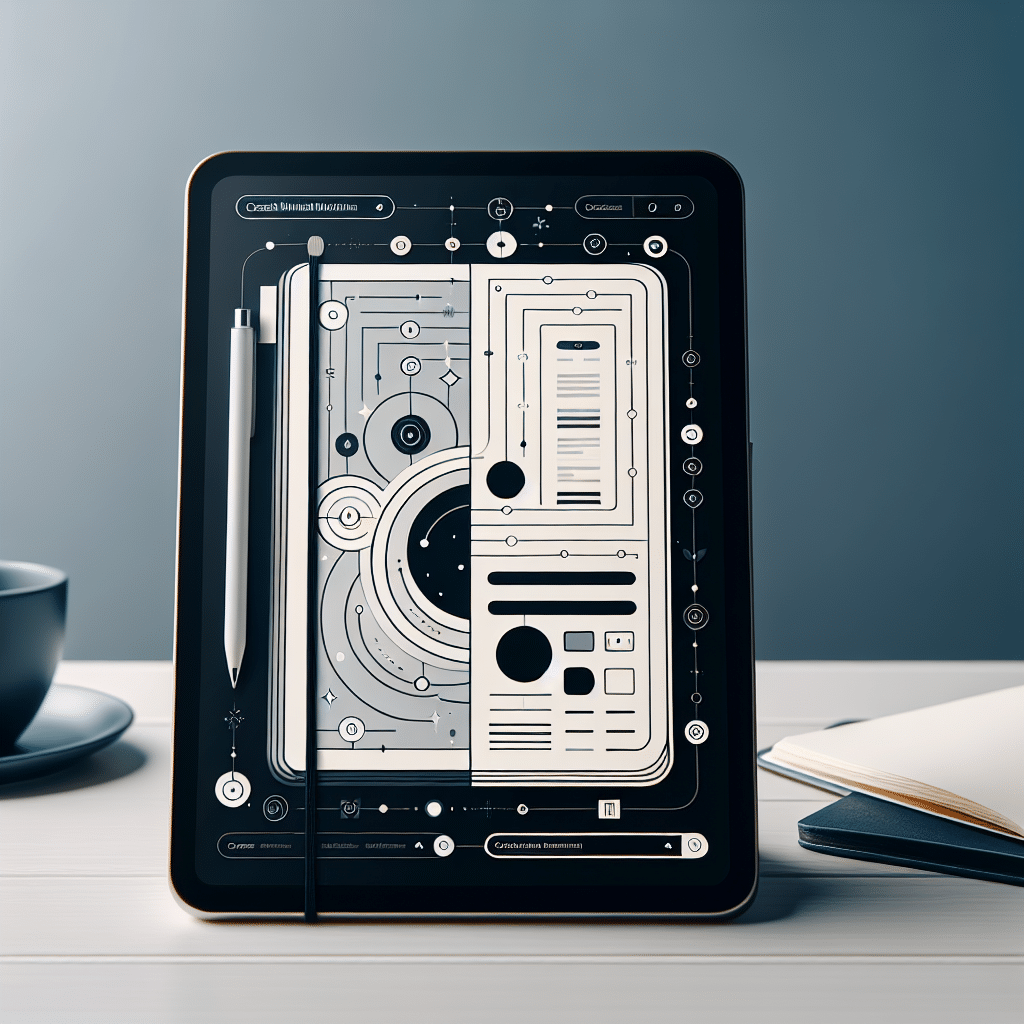Understanding Creative Minimalist Bullet Journaling
What is Bullet Journaling?
Bullet journaling is a customizable organizational system that combines elements of diary, planner, and to-do lists in a streamlined format. Originating from the mind of designer Ryder Carroll, it allows individuals to track progress, set and achieve goals, and reflect on their daily lives. For digital planners, adopting a minimalist approach can streamline this process even further.
Key Elements of Minimalist Bullet Journaling
-
Symbols and Signifiers: Use a minimalist set of symbols to indicate tasks, events, and notes. For example:
- Tasks: ●
- Completed tasks: ✔️
- Events: ○
- Notes: —
Keeping your symbols limited will promote clarity while ensuring your journal remains functional.
-
Color Palette: Limit your color choices. Opt for a muted color palette with two to three primary colors. This helps maintain a clean look, reduces visual clutter, and aligns with the minimalist philosophy.
-
Layout Design: Choose a clean, grid-based layout. Use apps like Notability, GoodNotes, or Microsoft OneNote to create or modify grid templates. Grids can help organize your space without overwhelming your visual aesthetic.
-
Spacing and Margins: Employ consistent spacing and margin sizes across pages. This technique makes your journal not only more visually appealing but also easier to navigate.
Digital Tools for Minimalist Bullet Journaling
-
Apps: Utilize robust apps such as Notion, Trello, or Evernote, which offer built-in templates that can be easily customized. Each of these tools provides flexibility while maintaining minimalism.
-
Stylus and Tablet: For a more personalized touch, use a stylus with your tablet. This will aid in creating handwritten notes and drawings that can still match your minimalistic aesthetic.
-
Digital Stickers and Icons: Consider platforms like Canva or Creative Market that offer minimalist designs. Using digital stickers for headers or sections can facilitate organization without adding visual heft.
Implementing Minimalist Structures
-
Monthly Log: Create a monthly log where you write down important dates, tasks, and goals. Limit the entries to essential information only, focusing on priorities.
-
Daily Log: Keep daily entries succinct. Allocate a maximum of five tasks per day to encourage you to focus on what truly matters. This limit prevents overwhelm and promotes productivity.
-
Habit Tracker: Design a minimal habit tracker using simple checkboxes. Track one or two habits each month, making it easier to develop consistency without feeling burdened.
-
Brain Dump: Include a brain dump section as needed. This can be a blank page where you jot down ideas or tasks that don’t have an immediate deadline, keeping clutter out of your main planner while fostering creativity.
Creative Minimalist Design Techniques
-
Typography: Opt for a single font which is easy to read. You can emphasize keywords using bold or italic styles rather than introducing many different typefaces.
-
Line Art Doodles: Incorporate simple line art illustrations. These minimal sketches can complement your entries without overwhelming the space, adding a personal touch without clutter.
-
White Space: Prioritize white space in each section. This not only enhances the journal’s aesthetic but also helps guide the eye, ensuring that key information stands out.
Sample Monthly Layout
- Header Section: Place the month at the top-center of the page.
- Goals Area: Directly beneath, leave space for writing key goals.
- Calendar Grid: Create a simple grid layout to mark important dates.
- Task Area: Allocate space for tasks beneath the calendar, keeping it to a maximum of 10 items.
Maintaining Flexibility in Minimalism
Adopt the philosophy of ‘less is more’ but remain flexible. Rather than adhering strictly to a set format, adjust your methods as necessary. For instance, if tracking more than five tasks per day helps on a specific week, allow yourself that flexibility.
Digital Accessibility Features
- Cloud Sync: Choose a planner that syncs across your devices. This attribute allows you to access your bullet journal anywhere, maintaining your organization on the go.
- PDF Exporting: Use apps that allow you to export your journal as a PDF. This feature is useful for sharing or archiving journal entries.
Utilizing Automation in Digital Planning
- Recurring Tasks: Leverage your app’s automation features to set recurring tasks like weekly reviews or monthly reflection sessions.
- Integration Tools: Use services like Zapier to integrate your bullet journal with other productivity tools. Automating data entry can significantly reduce manual effort.
Adopting a Minimalist Mindset
Embrace the minimalist philosophy beyond aesthetics. Focus on intentionality—invest time in contemplating what truly adds value to your life and goals. Aim for a journal that reflects your personal growth rather than a collection of completed tasks.
Digital Journal Templates
Explore pre-made templates to expedite your journaling process. Many platforms offer customizable templates perfect for minimalists. These can provide structure while allowing for personal flair.
Regular Reviews
Implement regular review sessions to assess progress towards goals and adjust your planning methods. This practice will not only ensure accountability but also encourage adaptive thinking in your planning.
Final Tips for Digital Minimalist Bullet Journaling
- Avoid overcomplicating your layouts.
- Stick to core purposes for your journal—tracking, planning, and reflecting.
- Keep inspiration but continuously assess which elements genuinely serve your planning needs.
By focusing on these creative minimalist methods for designing your digital bullet journal, you can enhance productivity and promote a clear and peaceful planning experience that aligns with your personal style and objectives.
